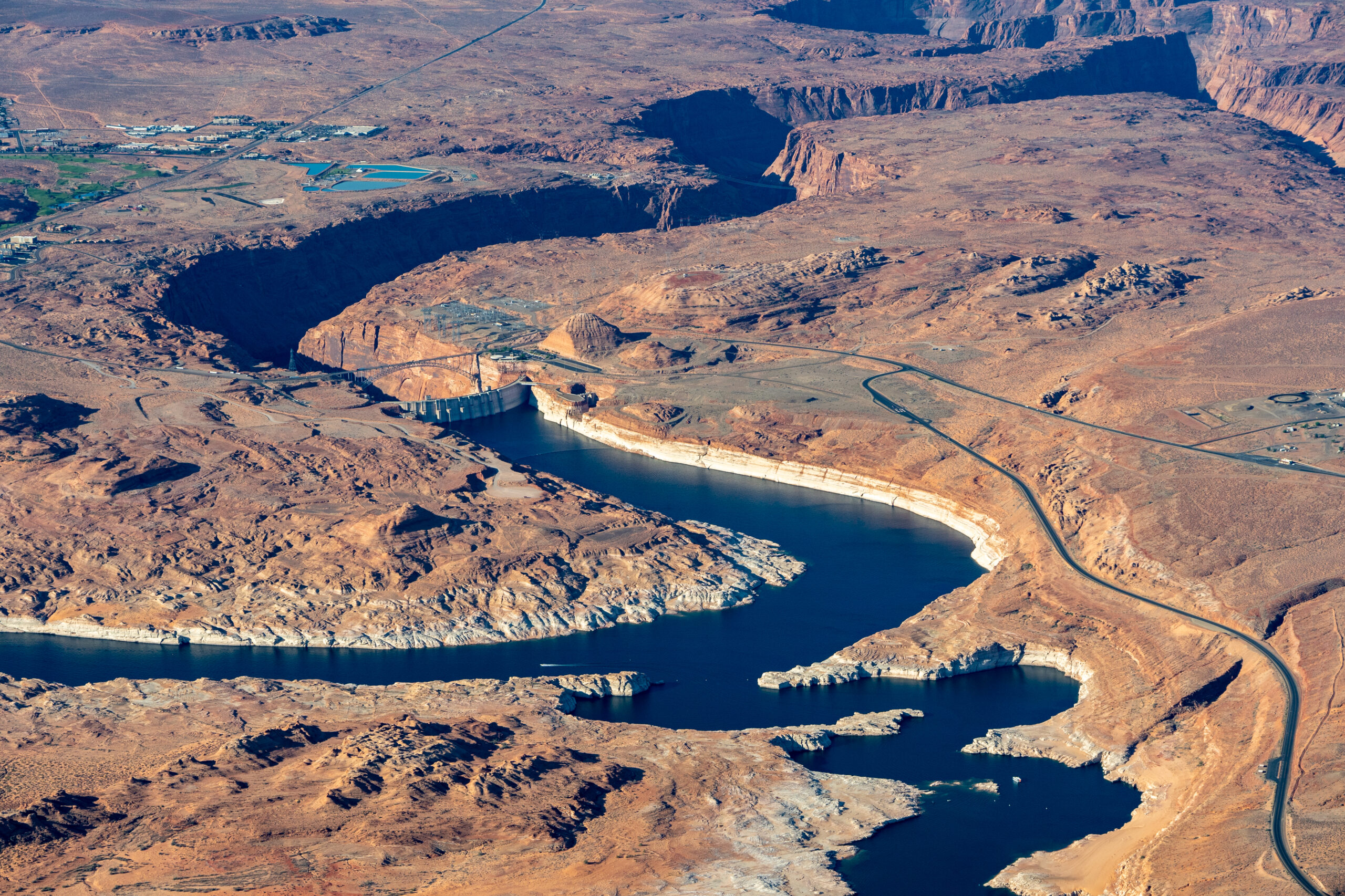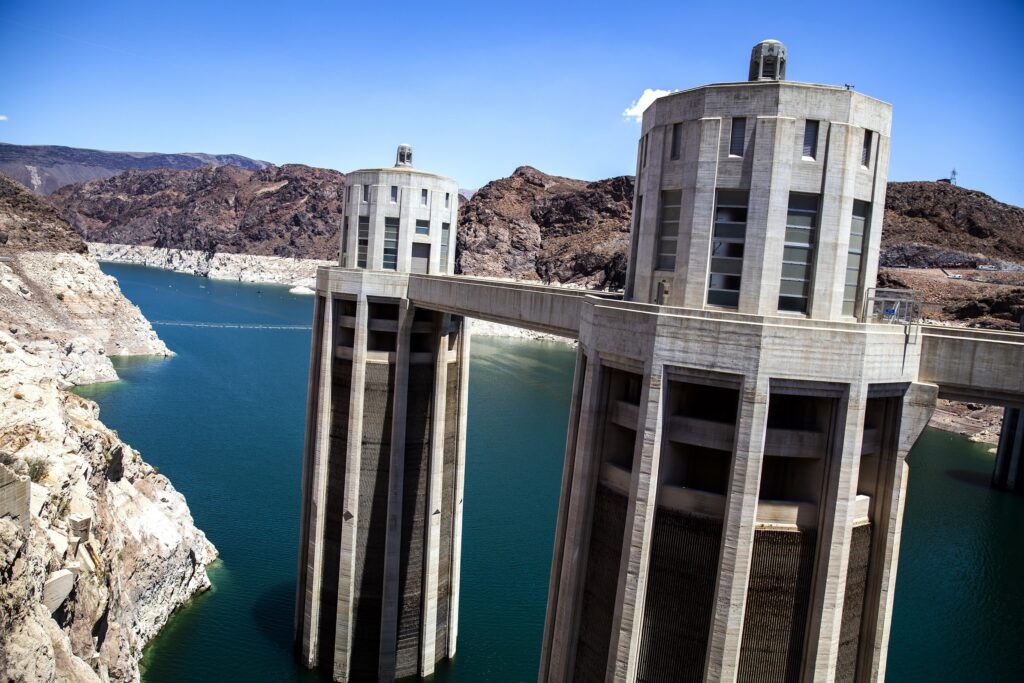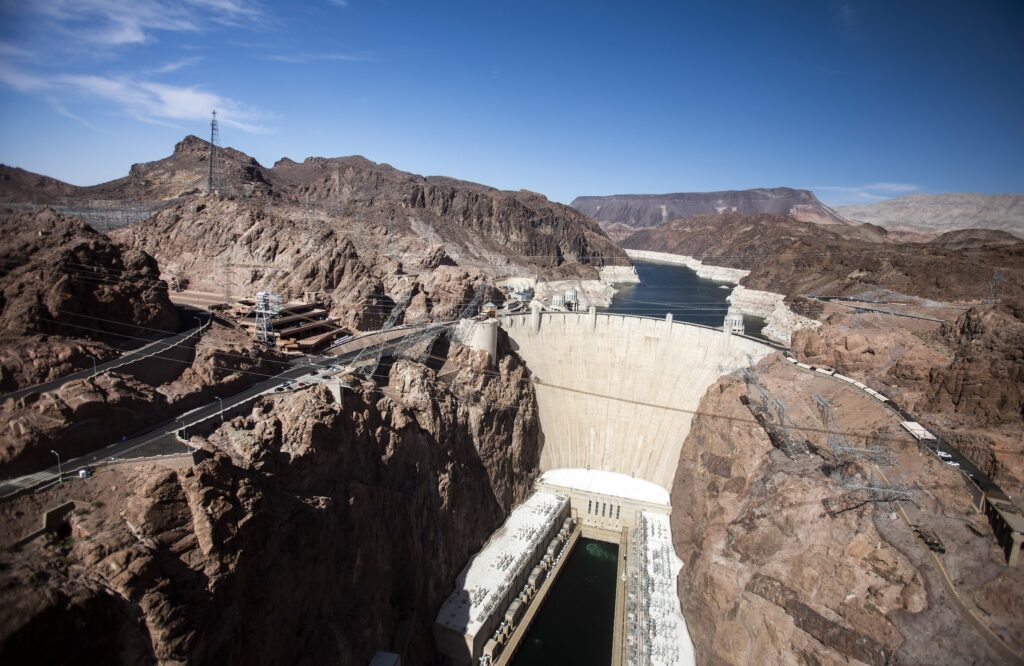Federal agency weighs emergency action as Colorado River demand outpaces supply

Good morning, and welcome to the Indy Environment newsletter.
As always, we want to hear from readers. Let us know what you’re seeing on the ground and how policies are affecting you. Email me with any tips or suggestions at [email protected]
To get this newsletter in your inbox, subscribe here.
It comes down to a math problem gone wrong.
The Colorado River is in a crisis. There is less water coming into the watershed, which supports about 40 million people across the Southwest, than there is water diverted away to farms, cities and businesses, from Colorado to Nevada to California. The river’s two main storage reservoirs, Lake Mead and Lake Powell, are at historically low levels and operating in uncharted territory.
The reservoirs, stocked with water that originates as snowpack, are not expected to refill soon. Forecasters predict a lackluster runoff, the amount of snow that melts away, drains into the river and eventually reaches the reservoirs. A hotter and drier climate has contributed to a smaller river — less supply. And water managers are struggling to figure out how to move forward, as some cuts and reductions have been made, but not enough to match the water that’s available.
At the same time, similar arid conditions are contributing to upward pressures on demand to use water. The states in the Lower Colorado River Basin (Arizona, California and Nevada) depend on Lake Mead, held back by the Hoover Dam. In Arizona and California, agricultural districts are meeting or exceeding their expected water use due, in part, to a very hot and dry start to the year. And water users, including the large municipal purveyor that supplies Southern California, might have to draw on their reserve account at Lake Mead, further lowering the reservoir levels.
“If the year that we’re working within is hot and dry, there is more crop demand than if we have storms within the year,” said Jeremy Dodds, who helps account for water use at the U.S. Bureau of Reclamation, the federal agency tasked with managing the delivery of Colorado River water.
In a recent letter first reported by the Arizona Daily Star’s Tony Davis, federal water managers warned the states that they are considering an emergency action that could accelerate the decline of Lake Mead. They are proposing to keep more water in Lake Powell, which is held back by Glen Canyon Dam upstream. Lake Powell and Lake Mead work together in tandem.
By keeping more water in Lake Powell, federal officials would release less water downstream to Lake Mead than expected. The move is intended to keep Lake Powell stable, providing a small window of relief to the system. But it comes with a cost: Such a move would lead to the further decline of Lake Mead, potentially making the risk of deeper, short-term water cuts more likely.
In addition to the action resulting in Lake Mead dropping roughly 7 feet lower, it could also have an impact on the hydroelectric power produced at Hoover Dam. In California alone, the cost of replacement power could be about $5 million, said Bill Hasencamp, the manager of Colorado River Resources for the Metropolitan Water District, which serves most of Southern California.
But he suggested the sacrifice was worth stabilizing Lake Powell, noting that “the proposal, based on the modeling I’ve seen, would significantly reduce the risk in the next 18 months.”
The Bureau of Reclamation had planned to release 7.48 million acre-feet from Lake Powell to Lake Mead (an acre-foot is the amount of water that can fill an acre to a depth of one foot). Under the proposed action, federal water managers contemplate leaving 480,000 acre-feet in Lake Powell.
The emergency reshuffling of water is meant to address a pressing issue amid the larger crisis. In the face of back-to-back years of less water, Lake Powell has dropped so low that it is close to reaching an elevation at which it was not intended to operate.
“The reality is that we’re in situations we’ve never been in before,” Colby Pellegrino, the deputy general manager of the Southern Nevada Water Authority, said during an interview this week. “We’re going to have to take them cautiously, one step at a time. And in some cases, we’re going to have to react very quickly to changing information,” such as runoff forecasts.
As Lake Powell nears a critical threshold, or drops below it, the risks become serious. It would threaten the production of hydropower sent across the West and the supply of water to nearby communities, including the city of Page, Arizona, and the LeChee Chapter of the Navajo Nation. Page relies on Glen Canyon Dam penstocks to deliver water to its population of about 7,500.
In the letter, Tanya Trujillo, a top official with the U.S. Department of Interior, which oversees the Bureau of Reclamation, asked the seven states in the Colorado River Basin to provide input on its proposed emergency action to keep more water in Lake Powell.
The bureau, Trujillo said, has not had to operate at such low levels since the reservoir was filled. The issues associated with operating Lake Powell below the critical threshold, Trujillo wrote, raise “profound concerns regarding prudent dam operations, facility reliability, public health and safety, and the ability to conduct emergency operations.”
State officials are expected to comment on the federal emergency plan by April 22.

Those comments are likely to focus, at least in part, on how the action would affect Lake Mead. Several water officials across the basin said that whatever action the federal government takes should not trigger a new series of cuts. Water reductions in Arizona, California and Nevada are based on the elevation of Lake Mead, in accordance with the basin’s Drought Contingency Plan.
"We want the outcome to be that there are no additional reductions because of holding back [the water],” said Tom Buschatzke, who leads the Arizona Department of Water Resources.
On that, there appears to be some agreement across the watershed, including within the Upper Colorado River Basin, which includes Colorado, New Mexico, Utah and Wyoming.
Chuck Cullom, executive director of the Upper Colorado River Commission, said “the discussion among the basin states currently, as we prepare a response back to the [Interior] Secretary, is to operate and account for the held back water in a way that avoids penalizing the Upper Basin or the Lower Basin. We’ll leave it to the [Interior] Secretary on how best to achieve that goal.”
But the mechanics are still being worked out, and negotiators remain in active talks to reach a consensus decision. Although the Bureau of Reclamation's action could temporarily halt Lake Powell’s drop for the next 18 months, it does not address the systemic issues at the center of the unfolding crisis.
“The threat that we face in this basin is a declining water supply, and depletions that are out of balance with the available resource,” Cullom said. “That’s why the storage has been depleted. And the expectation is there will be a need for reconciling that mismatch in the coming years.”
Indeed, as part of the Interior Department’s message, Trujillo urged states to “prioritize work to further conserve and reduce use of Colorado RIver water to stabilize the system’s reservoirs.”
But doing so can be challenging, costly and painful, especially as the effects of an aridifying climate play out in other ways. The Bureau of Reclamation is working with entities in two Lower Basin states, Arizona and California, that are currently on track to consume or divert more water than they were originally projected to use. Most of these water users are agricultural districts.
Dodds, who manages the bureau’s water accounting and verification group in the Lower Basin, said that forecasted overuse, this early in the season, is not uncommon, but it may be slightly higher because of abnormally dry weather across the Southwest in the first few months of 2022 and changes in commodity prices influencing agricultural production.
Reclamation, he said, is closely monitoring the situation to avoid overuse, or what water managers describe as “overruns.” Because Lake Mead is in its first-ever official shortage, the operating rules governing the Colorado River require water officials to ensure there are no overruns.
“This is the first year that we’re operating under the condition, and the assumption that there cannot be any overruns,” he said. “That’s why we’re very closely working with our water users.”
One of those water users is the Imperial Irrigation District, which holds the largest entitlement to Colorado River water, 3.1 million acre-feet. Agricultural water consumed within the district is up by about 81,000 acre-feet over what was estimated for this time of year. A spokesperson for the district, known as IID, said in an email that it is still early in the year and noted that agricultural water demand varies from year to year, a direct result of commodity markets and food supplies.
“For this year, IID has used less than 25 [percent] of its annual supply in the first quarter,” wrote Robert Schettler, a spokesperson for the district. “Given the variation of [agriculture] water demands and IID water management initiatives, the district does not anticipate ending the year in an overrun status as IID is working aggressively with the growers of the Imperial Valley to this end.”
Despite the recent increase in demand, over the past several years, California has used less than its total allocation, cumulatively leaving more than 1 million acre-feet in Lake Mead. That water in Lake Mead was stored in a reserve account, under a program known as Intentionally Created Surplus, or ICS. The program credits water users for storing a portion of their share in Lake Mead. In exchange, water users can withdraw from their reserve account at a later date.
With other California water supplies facing severe drought shortages, the Metropolitan Water District likely will have to tap into its reserve account at Lake Mead.
Hasencamp said the state conserved that water to benefit Lake Mead: Were it not for California’s decision to store so much water in Lake Mead, there would have been an official declaration many years earlier. But it was known, when the multi-state agreements were signed, that it could one day be removed when needed.
Still, he acknowledged the “timing isn’t great.”
“We wish we didn’t have to, but we really have no choice,” Hasencamp said.
Meanwhile, Arizona, California and Nevada are working to implement a plan, signed last year, to keep an additional 500,000 acre-feet in Lake Mead over the next two years. Officials hope that this plan, known as the 500+ Plan, in addition to other agreements, can help stabilize the system as negotiations continue about how to manage the river when current rules expire in 2026.
At the same time, the Upper Basin has been criticized for not taking as much of an organized approach to curbing water demand, similar to the Lower Basin, which has worked for years to slash its consumption of water through a variety of system-wide programs. The creation of a demand management program in the Upper Basin has been a point of contention, and tensions remain among some water users who have sought to increase their use of the river.
In an interview, Elizabeth Koebele, who studies Colorado River governance at UNR, said the Department of Interior letter is what political scientists describe as a “focusing event.”
Koebele said it could serve as an opportunity that catalyzes the basin states into action and promotes system-wide thinking about how to move forward. She said it was a recognition of the reality facing the basin — that the hydrology is so bad that the federal government is taking action.
She asked: “When are we going to get to a level when we actually have to do something big?”
The situation, Hasencamp said, underscores how tough the negotiations will be over the long-term management of the river.
“The hope is and the expectation is that we have enough agreements in place to get us through the next four years,” Hasencamp said. “The last few years have also shown us that the future risks that we were all kind of hearing about came a lot sooner — and are in our face.”

Here’s what else I’m watching this week:
KUNR’s Bert Johnson looks at snowpack in Northern Nevada. Things are not good. “January, February, and March this year added up to the lowest precipitation for those three months that we’ve ever seen at SNOTEL sites, going back to the early ‘80s,” said Jeff Anderson, a Nevada hydrologist with the USDA’s Natural Resources Conservation Service, known as NRCS.
Something to watch: “The Center for Biological Diversity filed a petition [this week] with the U.S. Fish and Wildlife Service seeking Endangered Species Act protection for the critically imperiled Railroad Valley toad, which is threatened by a proposed lithium production project and oil drilling.” Here’s the press release that the conservation group sent out on Tuesday.
E&E News’ Jael Holzman and Hannah Northey report on industry reaction — and a little bit of skepticism — to President Biden’s use of the Defense Production Act to encourage the supply of critical minerals needed to power large-scale batteries and electric cars. The reporting confirms that the order is not intended to change the permitting of mines on federal public land.
This week, my colleague Humberto Sanchez looked at Sen. Catherine Cortez Masto (D-NV)’s position on efforts by progressive Democrats to reform the General Mining Law of 1872.
“Climate change impacts the majority of Nevadans on a daily basis, according to a new Suffolk University/Reno Gazette Journal poll of Nevada voters,” RGJ reporter Amy Alonzo writes. “The survey of 500 Nevadans shows that most people in the Silver State share concern about the impact of global warming, especially when it comes to the rise in wildfires in the West and resulting poor air quality.”
